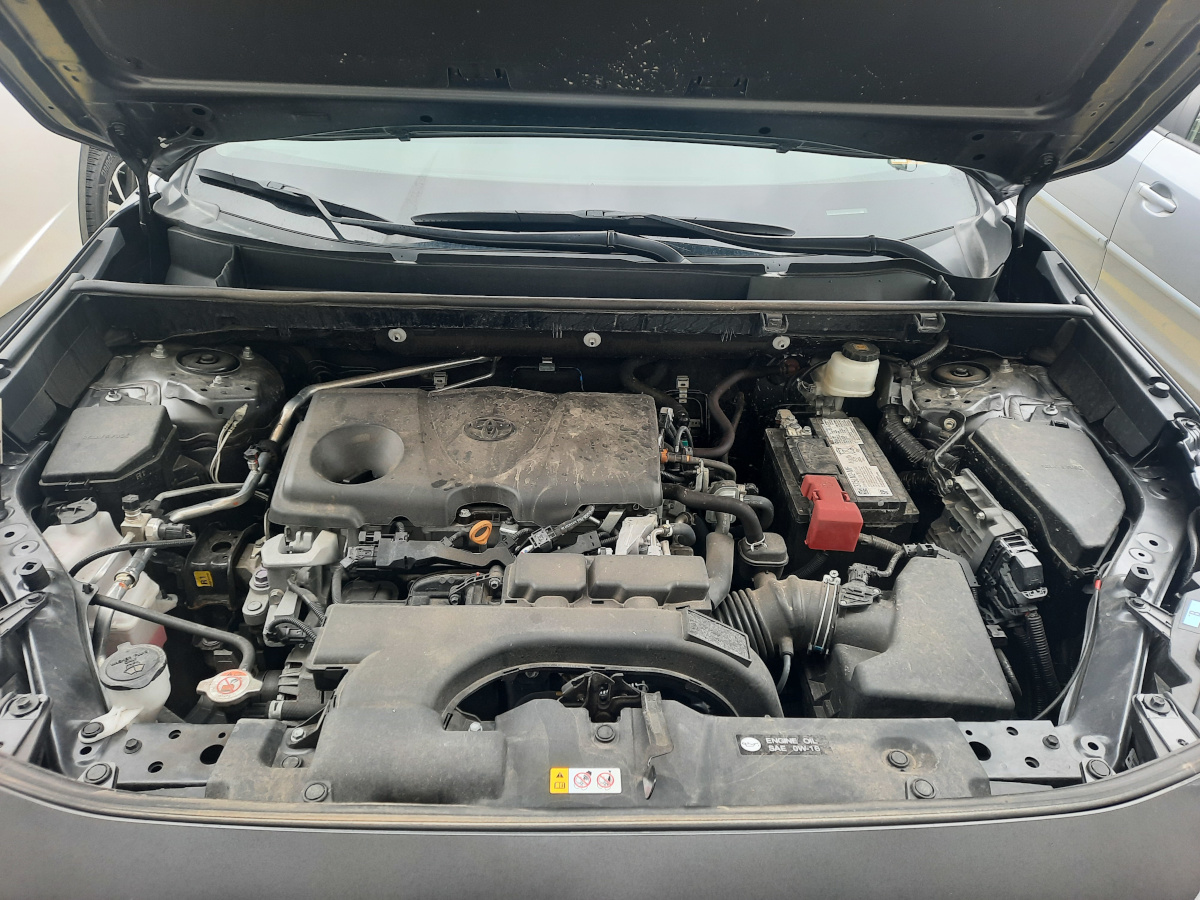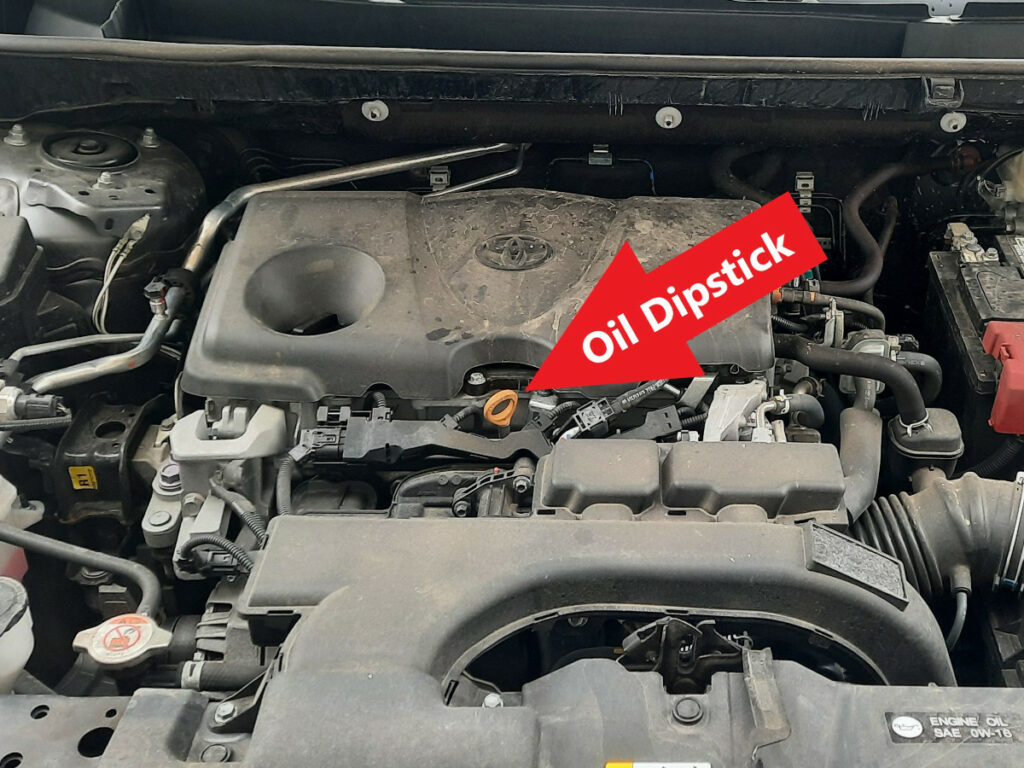Toyota RAV4 Engine Oil Capacity (by Model Year)
Considering how important oil changes are to your RAV4 maintenance, knowing the Toyota RAV4 engine oil capacity is valuable. Otherwise, how would you know how much to buy for the change? Oil capacity refers to the maximum amount of fluid required to keep the engine lubricated.
This guide breaks down the capacity by RAV4 model year, so you can find it easier. We also explain why the oil capacity figure is important and give you some further advice about checking or changing the oil.

Oil Capacity By Model Year
You can find the oil capacity for your RAV4 model year in the owner’s manual. It’s typically towards the end near “Specifications”.
Beyond that, we’ve also included them in this handy guide to make your maintenance easier. Search below for the model year of your RAV4, and the oil capacity is listed next to it.
Please note that the capacities are the same for the gas, Hybrid, and Prime models and all trims as well.
| Model Year | Oil Capacity (with Filter Change) |
|---|---|
| 2024 | 4.8 qt. (4.5 L) |
| 2023 | 4.8 qt. (4.5 L) |
| 2022 | 4.8 qt. (4.5 L) |
| 2021 | 4.8 qt. (4.5 L) |
| 2020 | 4.8 qt. (4.5 L) |
| 2019 | 4.8 qt. (4.5 L) |
| 2018 | 4.6 qt. (4.4 L) |
| 2017 | 4.6 qt. (4.4 L) |
| 2016 | 4.6 qt. (4.4 L) |
| 2015 | 4.6 qt. (4.4 L) |
| 2014 | 4.6 qt. (4.4 L) |
| 2013 | 4.6 qt. (4.4 L) |
| 2012 | 2.5 L 4-cylinder: 4.7 qt. (4.4 L) 3.5 L 6-cylinder: 6.4 qt. (6.1 L) |
| 2011 | 2.5 L 4-cylinder: 4.7 qt. (4.4 L) 3.5 L 6-cylinder: 6.4 qt. (6.1 L) |
| 2010 | 2.5 L 4-cylinder: 4.7 qt. (4.4 L) 3.5 L 6-cylinder: 6.4 qt. (6.1 L) |
| 2009 | 2.5 L 4-cylinder: 4.7 qt. (4.4 L) 3.5 L 6-cylinder: 6.4 qt. (6.1 L) |
| 2008 | 2.4 L 4-cylinder: 4.5 qt. (4.3 L) 3.5 L 6-cylinder: 6.4 qt. (6.1 L) |
| 2007 | 2.4 L 4-cylinder: 4.5 qt. (4.3 L) 3.5 L 6-cylinder: 6.4 qt. (6.1 L) |
| 2006 | 2.4 L 4-cylinder: 4.5 qt. (4.3 L) 3.5 L 6-cylinder: 6.4 qt. (6.1 L) |
| 2005 | 4.0 qt. (3.8 L) |
| 2004 | 4.0 qt. (3.8 L) |
| 2003 | 4.4 qt. (4.2 L) |
| 2002 | 4.4 qt. (4.2 L) |
| 2001 | 4.4 qt. (4.2 L) |
| 2000 | 4.3 qt. (4.1 L) |
| 1999 | 4.3 qt. (4.1 L) |
| 1998 | 4.3 qt. (4.1 L) |
| 1997 | 4.3 qt. (4.1 L) |
| 1996 | 4.1 qt. (3.9 L) |
Without a filter change, check your owner’s manual for the amount required. It’s typically about .3 qt. less since about that much will stay behind in your old filter.
Why Oil Capacity Is Important
It’s essential to maintain the proper oil capacity at all times. When you perform an oil change, you can cause many problems by underfilling or overfilling the engine. Here are a few things to consider.
Overfilling the oil can cause these problems:
- The crankshaft comes into contact with the oil and aerates it, leaving it foamy or frothy and unable to lubricate the engine.
- Excessive pressure occurs within the engine. This added pressure looks for a way to escape, causing damage to the seals or gaskets.
Underfilling the oil can cause these problems:
- Without the right amount of lubrication, friction occurs between the metal parts inside the engine.
- The engine needs to work harder, which leads to it overheating.
- Horsepower and fuel economy become diminished.
Either way, you could allow serious damage to occur to the engine. The proper oil level is essential to avoid costly repairs down the road.
(JD Power)
Signs of Low or High Oil Level

You should also pay attention to the signs that there’s either too much or too little oil in the system. Some may be similar or resemble symptoms that occur with other problems. However, you may know the level is off if you notice these symptoms after an oil change.
High oil level warning signs include:
- Blue exhaust smoke
- Leaking oil
- Burning smell
- Oil pressure gauge reads high or fluctuates
- Rough idle
- Stalling engine
- Check Engine Light on dashboard
- Overheating or hot engine
- Increased engine noise
- Poor or hesitant acceleration
Low oil level warning signs include:
- Check Engine Light on dashboard
- Engine clunking
- Overheating or hot engine
- Burning smell
- Poor performance
- Stalling engine
If you notice any of these signs, you should stop your RAV4 immediately and check the oil.
How to Check Your Oil Level
According to Cars.com, you should be checking your RAV4 oil level once a month, at a minimum. The old adage was to check it every time you filed up your gas tank. You also want to check it immediately following an oil change to ensure it is filled to the right amount.
There’s no way to know how much oil is in the engine except by manually checking it using the car’s oil dipstick. This isn’t a difficult job, and it can be done at home with nothing more than a paper towel or rag.

Here are some basic steps to follow to check your RAV4’s oil level.
- Park your SUV on level ground.
- Warm up the engine briefly and turn it off.
- Wait five minutes for the oil to drain back to the bottom of the engine.
- Pull the dipstick out with your paper towel or rag at the end to catch any drips.
- Wipe off the dipstick.
- Reinsert the dipstick.
- Pull the dipstick back out while holding the rag under the end and check the oil level.
- The oil level should be between the two dots on the indicator stick. If it’s below the first dot, there’s not enough oil, while an oil level above the second dot means that there’s too much.
- Wipe the dipstick off and reinsert.
If there’s not enough oil, that’s a simple fix. Put some more oil in, run the engine briefly, and check the levels again.
On the other hand, having too much oil can create problems for the average driver. You need a suction pump to draw out the extra oil, or you need to drain the system again and start over.
Other Considerations
Modern lubricants last in your engine for many more miles than in the past (3,000 used to be the oil change interval, now most vehicles are between 7,500 and 10,000). Car manufactures agree you should still change your oil every 6 to 12 months, even if you aren’t driving enough to surpass the mileage recommendation. Most owners manuals will briefly mention a time frame without much explanation as to why.
There are many factors that go into this: oil additives break down, water vapor can get stuck, the oil can sludge, etc.
If you are someone who frequently drives short trips or you drive less than 5,000 miles a year we still recommend changing your oil once every 12 months to be safe.
Lastly, it may not seem necessary to change the oil when you own either the Hybrid or the Prime. Since both still utilize the gasoline engine quite often, especially the Hybrid, it’s still recommended to change it just as often. The exception to this would be if you are using the Prime primarily in EV mode for your trips.
Your RAV4 Oil Changes Made Easier
The chart above makes performing an oil change on your RAV4 much easier. You can get it just right by knowing how much oil is required.
If you’re ready to change your own oil, check out our RAV4 oil change guide here.
If you are uncomfortable performing your own oil changes, visiting a local mechanic or Toyota service center is best. However, you are still responsible for checking the oil often to make sure there are no problems.
